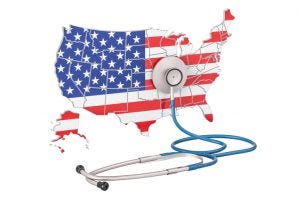July 25, 2019

In the US the ongoing political debate about patents and prices will determine the long-term viability of the US biosimilars market, says an industry expert.
The US biosimilar drug market was established in 2015 with the approval of Zarxio, Sandoz’s version of the Amgen drug Neupogen (filgrastim).
Zarxio quickly established itself – the drug accounted for 45% of all the short-acting filgrastim used in the US last year. In contrast, the wider market has been slow to develop.

Image: iStock/AlexLMX
Legal complexity
As of July 10, only six of the 21 biosimilars approved by the FDA have been launched. The firms behind the remaining 15 drugs must wait for the legal landscape to change says Clarivate Analytics’ Mari Serebrov.
“The others are all waiting for US patents on the reference biologics to expire or be litigated,” Serebrov said.
She explained that, unlike chemical drugs, biologic medicines usually have extensive IP portfolios citing Humira (adalimumab) – for which AbbVie holds 130 patents – as an example.
Slow start
Aside from patents, other issues have slowed market development. For example, Congress passed the BPCIA in 2010, but the FDA took two years to publish a guidance document.
The lack of a dedicated pathway prior to 2010 has also stymied the US market according to Serebrov, who cited the differing approaches the EMA and FDA took to Sandoz’s Omnitrope (somatropin) as an example.
“When Sandoz’s Omnitrope (somatropin) won EU approval in 2006, it was the world’s first follow-on approved on a dedicated biosimilar path. The FDA approved Omnitrope that same year but as a 505(b)(2) drug, not as a biosimilar.
“Even if a biosimilar path had been in place in the US at the time, the FDA could not have approved Omnitrope as a biosimilar. That’s because the reference list drug, like other simple proteins such as insulin and other hormones, was approved as an NDA on the FDCA’s 505 path that’s used for small molecule drugs.”
Next March, this situation should be resolved. The BPCIA requires that all simple proteins approved as NDAs will be reclassified as BLA. Until then, however, the FDA cannot approve biosimilars referencing those drugs.
Pricing
Other issues slowing the US biosimilars market may take longer to resolve according to Serebrov, who says the current debate about drug prices in the US is the key dynamic.
“A lot depends on how Congress addresses drug pricing and patenting issues. For instance, depending on how it would be implemented, a move to Medicare for All, Medicare negotiations, an international pricing index or drug importation could undermine the biosimilar market and erode financial incentives for investing in biosimilar development.
“Congress has the ability to make or break the market, but it’s too soon to predict what it will do and how it will do it,” she said.
About the Author
You May Also Like






